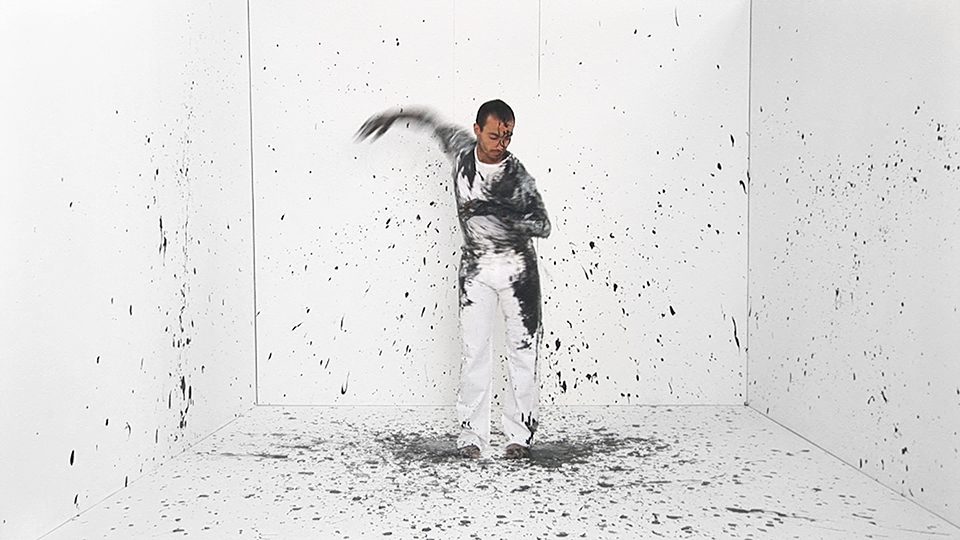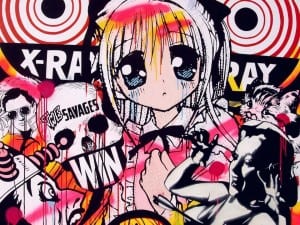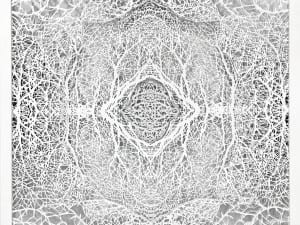The Pompidou Centre stages a new exhibition detailing the place of dance in art history and its influence on the visual arts.
The early 20th century was a vibrant time for dance: pioneering dancers such as Isadora Duncan (1877 – 1927) and Vaslav Nijinsky (1889 – 1950) were tearing apart tradition and laying the foundations for modern dance. Duncan declared in 1927 that her art was an attempt to visibly manifest the truth of her life through movement: “From the start, I have done nothing but dance my life.” This ideal of art as representative of life, articulated by Duncan, also finds expression in the visual art of the 20th century and the revolution in dance engendered a similar development in art, together lighting the fire of modernity.
It is this relationship between art and dance that the Pompidou Centre explores in their latest show, Danser Sa Vie (Dancing our Lives). Chief curator, Christine Macel, explains the motive behind the exhibition: “Our aim is to put modern dance at the centre of the avant-garde revolution and to show how this transient art has developed a major dialogue with visual art.” Through this tightly co-ordinated exhibition, Macel hopes to illuminate the dialogue between art and dance from 1900 to the present. Dance is a popular subject and exhibitions such as Dance With Camera at the ICA, Philadelphia (September 2009 – March 2010) and Move at London’s Hayward Gallery (October 2010 – January 2011) have focused on the associations between art and dance but they have predominantly concentrated their attentions on the post-1960s. Other shows look at the ballet and the elaborate costumes and set that partner the form. The exhibition at the Pompidou promises to delve beyond this and into the very fabric of the relationship; unveiling dance’s contribution to the avant-garde and laying bare the roots of contemporary art’s enthusiasm for dance.
It is an epic undertaking and the show features over 100 artists, with even this number being fewer than they had hoped to include. In addition to a vast selection of contemporary art, video works, sculptures and installations, Danser Sa Vie will also present records produced by dancers and choreographers who sought to retain a collective memory of an art form that does not aim to preserve. Dancers and artists sit hand in hand in this exhibition, however Macel clarifies: “It is not a show on dance: the dancers have been chosen because of their dialogue with the art.” Luckily though, dialogue between dancers and art is abundant – as this collection proves – and Macel was not hard-pressed to find dancers to include. One great example is German dancer Mary Wigman (1886 – 1973), who was in the vanguard for expressionist dance, or Ausdruckstanz. Her connection with art is followed through her life, moving from her influence on the great German Expressionist painters, Ernst Ludwig Kirchner (1880 – 1938) and Emil Nolde (1867 – 1956) through to contemporary American artist, Kelly Nipper (b. 1971).
Wigman was among those dancers that actively sought a dialogue with art. A member of Rudolf von Laban’s community at Monte Verità in 1913, the group engaged with new forms of artistic expression and experienced certain freedoms. Laban (1879 – 1958) himself had initially studied sculpture at École des Beaux-Arts in Paris before becoming interested in the relationship between the human form, movement and space and relocating to Munich to pursue dance. Both Laban and Wigman are assimilated into the exhibition under the theme of subjectivity. Danser Sa Vie is structured into three component parts: dance as self-expression; dance and abstraction and dance as performance.
From the subjectivity embodied in dances created by the greats of modern dance and their unprecedented exchange with artists, the exhibition moves to focus on the abstraction of the body. Developments in dance towards the abstract, in response to the increasing industrialisation of the 20th century, were mirrored with similar movements in the art world. Interest in the simplification of movement and the geometric styling of the body had a direct influence on artists of the avant-garde, but also fed back into the dialogues of the dancer. The geometry of dance was of particular concern to Rudolf Laban, who developed a form of dance notation based around the icosahedron, a geometric shape with 20 identical equilateral triangular faces, 30 edges and 12 vertices.
This tradition of geometric association finds responses in the work of contemporary artists such as Olafur Eliasson (b. 1967), who has created a new work for the exhibition at the Pompidou Centre. Whilst Laban, as a dancer, cultivated a relationship with art and approached his work from an artistic understanding and background, likewise many of the artists in the exhibition demonstrate direct interactions with dance. Some, such as Wassily Kandinsky (1866 – 1944), simply pay tribute to dancers such as Gret Palucca (1902 – 1993) but others have a closer relationship with the form. Olafur Eliasson is one such artist: Eliasson was a Scandinavian break-dancing champion in his youth and the influence of this involvement in dance can be seen in much of his work. He also considers his break-dancing to be his first artwork. The style of break-dancing is such that it incorporates angular and geometric movements of the body and Christine Macel points to the use of these notions in his artistic work and their subsequent correlation to the work of Rudolf von Laban.
Eliasson’s new work, created especially for Danser Sa Vie, is a video piece: Movement Microscope (2011), Macel explains, “deals with the movement of everyday life in the studio of the artist. It is like dancing whilst making art.” This concept of dancing and making art being as one is further explored in the final section of the exhibition: dance as performance art. This part of the show moves from the Dada implications of dance through to the partnership between John Cage (1912 – 1992) and Merce Cunningham (1919 – 2009) in the late 1940s and on to the growth of club culture with Andy Warhol (1928 – 1987).
This long period of creativity represents a movement from modern dance towards an understanding of everyday movement as dance, a post-modern viewpoint embodied by the dancer Anna Halprin (b. 1920). Halprin’s experiments with creating movement solidified the relationship between art and life, and in place of Duncan’s dance of her life, life was instead considered as an inherent dance. Life is a central preoccupation of the artists and dancers in the exhibition and with the development of post-modern dance and performance art, the lines between artists and dancers become ever more faintly drawn. In 1959, Halprin and John Cage together with a series of other dancers and artists formed San Francisco Dancer’s Workshop to further develop dance practice, whilst Cage’s student Robert Dunn (1928 – 1996) laid the foundations for the Judson Dance Theater in 1962. This involvement of artists and musicians in the progression of dance and formation of fundamental institutions dedicated to this goal demonstrates the extent of assimilation between the two forms.
Danser Sa Vie offers a comprehensive study into the mutual growth of dance and art, inviting viewers to witness the influences of dance upon art and art upon dance. The gradual assimilation of the two to a point where dance is indiscernible from art in performance is supported by a programme of live events. The major staging of the work of both artists and dancers side by side in an esteemed artistic institution such as the Pompidou Centre is a significant step in the consideration of dance as a major art form in context with contemporary art. Installations of work including Tino Sehgal’s Instead of allowing some thing to rise up to your face dancing bruce and dan and other things (2000) complements physical performances by artists such as Davide Balula (b. 1978), who employs 60 dancers for his Mechanical Clock for 60 dancers and by dancers including Trisha Brown (b. 1936). In addition to contributing to the Centre’s tradition for multi-disciplinary shows, this combination of the artist, dancer and performer in situ with installation pieces, video works, paintings and drawings promises to re-write the understanding of dance and the dancer from a visual arts perspective.
Danser Sa Vie ran at the Pompidou Centre, Paris until 2 April 2012.
Bryony Byrne





